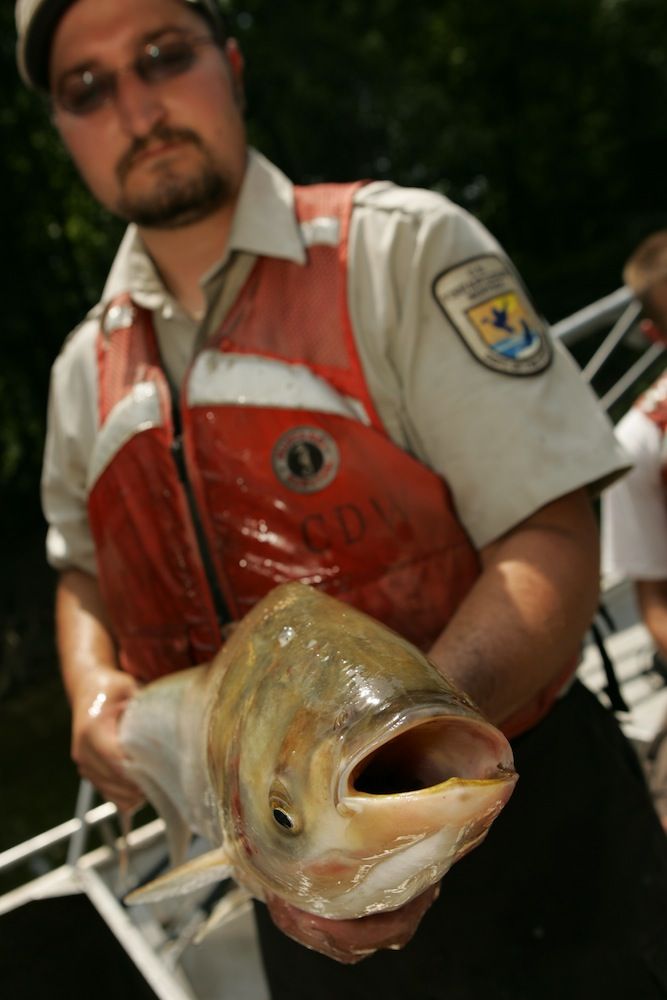Asian Carp Spread to Upper Mississippi

Invasive, plankton-slurping Asian carp are creeping up the Mississippi River.
Ready-to-hatch carp eggs were discovered as far north as Lynxville, Wisc., some 250 miles (400 kilometers) farther upstream than the northernmost known breeding population of the species, the U.S. Geological Survey said today (March 12).
Asian carp have voracious appetites and high reproduction rates. Some species of the fish can grow up to 100 pounds (45 kilograms) and scarf down 5 to 10 percent of their body weight in plankton in a single day. Four kinds of Asian carp – grass, bighead, silver and black — can now be found in U.S. waterways and they have a tendency to out-compete native fish.
The new study shows that "Asian carp spawned much farther north in the Mississippi than previously recorded," Leon Carl, Midwest regional director for the USGS, said in a statement.
"The presence of eggs in the samples indicates that spawning occurred, but we do not know if eggs hatched and survived or whether future spawning events would result in live fish," Carl added.
The eggs were found in samples that were collected last summer but only examined by scientists a couple of weeks ago, according to the USGS. Researchers with the agency visually identified the eggs and embryos as either bighead carp or silver carp and they say that genetic tests were inconclusive.
"Invasive Asian carp could pose substantial environmental risks and economic impacts to the Upper Mississippi River if they become established," Carl said.
Sign up for the Live Science daily newsletter now
Get the world’s most fascinating discoveries delivered straight to your inbox.
Scientists and fishermen have had the same worry in other parts of the country. It had been feared that the fish would spread into the Great Lakes, and last fall, researchers confirmed finding Asian carp in the Sandusky River, a tributary to Lake Erie in north-central Ohio. Attempts to curb the carp invasion have included fishing tournaments and campaigns to rebrand the fish as "silverfin" to whet American appetites for carp.
Follow Megan Gannon on Twitter and Google+. Follow us @livescience, Facebook & Google+. Original article on Live Science.










